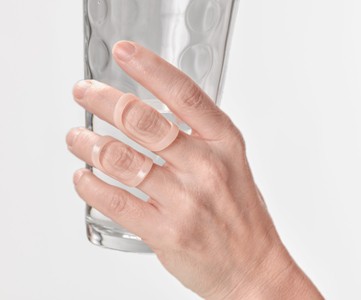What is Ehlers-Danlos Syndrome (EDS)
Most people know someone who is “double jointed”. Someone that has a body part that moves well beyond the normal range? That childhood friend that could bend his thumb backwards until it touched his wrist or the kid in school that could contort her leg in an odd position.
What you may not know is that people with more than “normal” flexibility in their joints are considered to have hypermobility. While some people with hypermobility are otherwise healthy, some may have a condition known as Ehlers Danlos Syndrome.
There are six major types of Ehlers-Danlos Syndrome (EDS). EDS Hypermobility or Type III is the most common. People with this condition have problems with their body’s production of collagen, causing loose, unstable joints and chronic long-term joint pain.
How did I get it?
Ehlers Danlos Syndrome (EDS) is a rare genetic disorder that affects about 1 in 10,000 to 15,000 people worldwide. The diagnosis for EDS is usually based on a physical examination from your healthcare professional along with family history.
What are the symptoms?
The main symptom of EDS hypermobility is “loose” joints. EDS can affect the large joints, such as the knees and elbows, as well as small joints in the fingers and toes. Dislocated joints and chronic joint pain are also very common.
The skin of someone with EDS is very elastic and can be stretched away from their body very easily. EDS’ skin may have a smooth or velvety appearance. Bruising and tearing of the skin is also common.
How is EDS- Hypermobility treated?
There is no cure for EDS hypermobility. If you are diagnosed with EDS, your health care professionals will work together to manage your symptoms and any complications. Physical Therapy can help strengthen your muscles and medications can be prescribed to help manage your pain. In some cases, surgery may be recommended to repair your joints.
Braces and splints can also be used to stabilize your joints. Knee braces, ankle splints, wrist and arm splints, and finger splints can all be helpful. Ring splints are ideal to improve your strength and function while preventing excessive motion. Custom splints, such as Silver Ring Splints work well and give the appearance of jewelry. Silver ring splints can be costly depending on the style and especially if they are needed for multiple fingers.
Oval-8® Finger Splints are molded out of high temperature plastic and are an affordable over-the-counter option, especially for growing children or for people who tend to lose splints easily. Oval-8’s are an ideal choice because they are light weight and comfortable. There is no need for tape or straps and they can be worn long-term.
If you think that a ring style splint might be beneficial, you may want to try an Oval-8 splint first before taking on the expense of metal ring splints. Having both type of splints may be a good option. Oval-8 splints are great when doing activities such as gardening or sports- when you may be more likely to lose a splint. Metal splints are ideal for those occasions when “jewelry” is more appropriate.
For Additional Information on how to manage EDS:
The Ehlers-Danlos National Foundation: http://www.ednf.org/
Watch This Video: https://www.youtube.com/watch?v=a-eiqhbuEnQ&list=LL-7CxtYTin1jOngPxduHHog
Like what you’ve read? Click here to subscribe to the blog!
Looking for More Information On Helpful Products For EDS?
Click on the image below

Our blogs are educational in nature and are not intended as a substitute for medical advice. Because your condition is unique to you, it is recommended that you consult with your health care provider before attempting any medical or therapeutic treatments. We are always happy to answer questions about products mentioned in our blogs, however, we cannot provide a diagnosis or medical advice.
